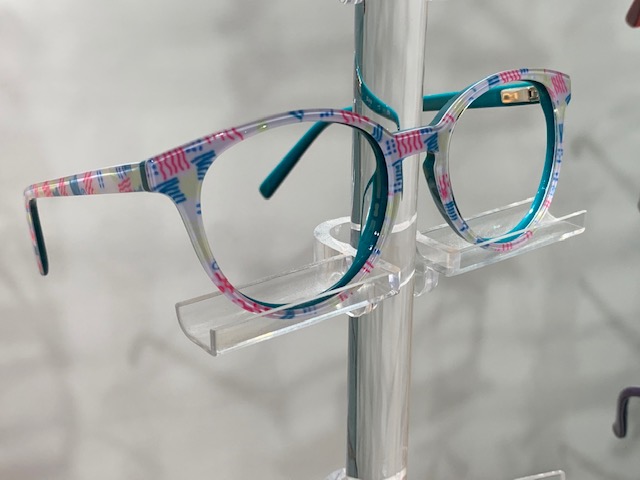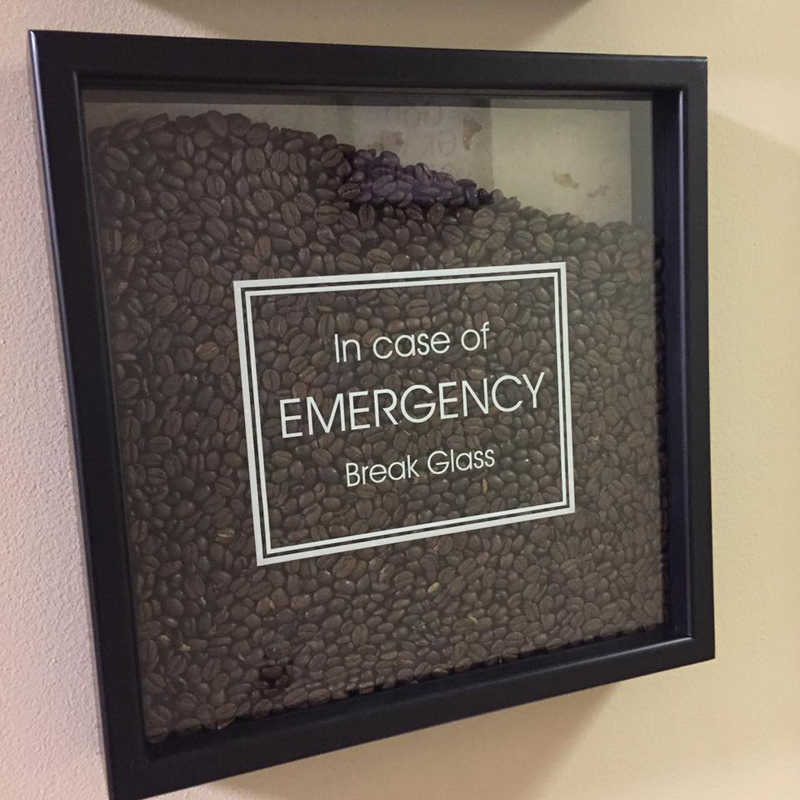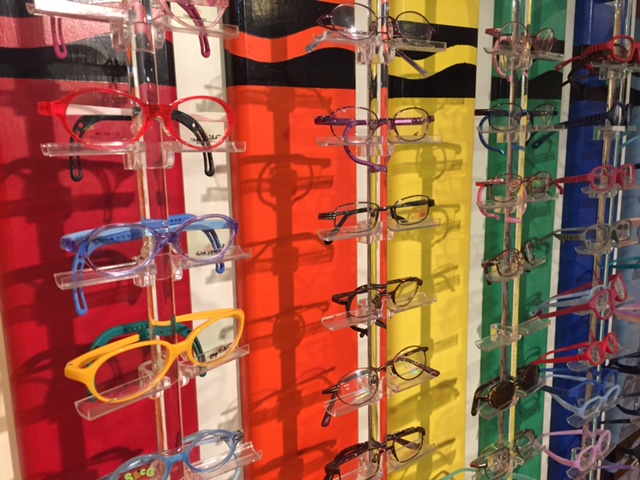
Fitting kids with correctly sized eyewear is essential for the proper development of their vision. That means not too big and not too small. Over the years I’ve seen many children that have been fit poorly with glasses. Most often they are fit several sizes too big, causing them to slip down the kids’ little noses. Slipping down is often caused by a temple length that is longer than the distance needed to reach the back of the ear. Slipping down is never a good thing.
However there are times when a larger eye size may be ideal or even necessary. Generally, I look for the child’s eyes to be centered in the lenses of the glasses. This is considered “optimal fit”, but occasionally I run into reasons that this so-called “optimal fit” is not the BEST for my patient.
When it comes to fit, eye size is only one part of the equation: bridge, temple length and overall width are equally important. However, while bridge and temple length must be perfect, eye size and overall width can be correct over a range of sizes depending on the circumstances. When a child requires this larger eye-size frame it is absolutely crucial that these other components are perfectly fitted.
However, when stepping up to a larger eye size the frame usually comes with a longer temple length that is too long for the child. These temple lengths must be customized to ensure a secure fit. Just because the eye size is larger, that is not a reason or excuse for the frames to slip down. A larger eye size frame, fit properly, will stay in position on the face and not interfere with visual development.
Here are 4 reasons why your child might benefit from a larger eye size, why you might see another child in a larger eye size frame or why you may need to fit your patient with a larger eye size.
1. Nystagmus or wandering eyes: When a child has eyes that wander back and forth they need extra lens area to look through. Nystagmus causes short quick movements of the eyes, darting quickly back and forth. If the frames are small and limiting it could interrupt their vision. Also kiddos with nystagmus often have a “null point,” which is the position of the eyes that creates the least amount of jutting back and forth. When I measure a child’s pupillary distance I take special care to look for this null point. If it’s far off to the side, causing the child to turn their head to see the clearest, I will mark it accordingly. If I see that the child often turns their head to accommodate for this point, a larger eye size frame may be required so that they are not restricted by the edge of the frame when looking around. In this case, just a few millimeters larger on the eye size can make a big difference in the field of vision.
2. Neck paralysis/ head tilt or head turn: Like nystagmus, a head turn or tilt may require a slightly larger eye size. Some children may suffer from a neck paralysis or stiffness which may make it difficult to turn their head in the direction they need or want to see.
Children who are in wheelchairs with restricted head rests also fall into this category. I have a young patient in a wheelchair whose daily positioning includes a tight head rest and a 45 degree recline. This caused a pseudo paralysis for him. He couldn’t move his head to see to the left or the right, only his eyes. If I didn’t fit him with a larger frame, his eyes would look beyond the frame and he would lose the benefit of his nearsighted prescription. The recline also put him at a disadvantage when looking at eye-level. If the frames did not extend far enough below his eye he would be looking under them. Special consideration should always be given when natural head movement is restricted in any way. Often a larger eye-sized frame can make a world of difference.
3. Safety: Glasses can be prescribed for eye protection. If a child has poor vision in one eye, the other eye needs to be fully protected! A pair of glasses that does not completely cover the entire eye socket area would not provide adequate protection. Not only should the lenses be made to a special safety thickness and of polycarbonate, but they also need to be large enough to cover the check bone, and extend enough around the eyes enough to block fingers and debris from easily entering the eye area.
4. Craniotomy and facial challenges: I’ve met many little children who have had surgeries on the skull and face area. When their glasses are being fit, it’s important to remember we are not just fitting the eyes, but the whole head. A substantial portion of the weight of the frame will be held by the sides of the head as well as the ears. Some kiddos may have scarring, swelling and sensitivity in the areas where the glasses touch. Care should be given to these areas! Sometimes a larger eye size is exactly what’s needed to take the pressure off. However, I do caution that you should still look for the smallest eye size that can be adjusted and molded to create the needed release of pressure. There is always a balance to consider. When using a larger eye size frame you may add unnecessary weight causing a problem, it’s a good idea to consider the overall weight of the frame and look for a frame that is larger, but also made of a lighter-weight material.
I have another patient who was born with a growth outside of her left eye socket. This growth, while benign, has required many surgeries to repair and rebuild her eye socket. Those surgeries left her with a large amount of scar tissue and a bone that protrudes more than 15mm further out on the left side of her head. Fitting her with any kind of “optimal” fit on her lenses would leave her with pressure on that side of her head. I had to look for frames that were slightly larger, light weight and with temples that could be molded to go around her head without touching that sensitive area of her head.
In a very fashion-centered adult eyewear world, “big” glasses are all the rage right now. But when fitting children, size is crucial. Anything too large will not stay on these active kiddos faces, and put unnecessary weight on developing noses. Since vision develops over the first 7-9 years of life, it’s paramount to make sure glasses fit perfectly during these ages. Sometimes this perfect fit may include looking for a larger eye size frame.


